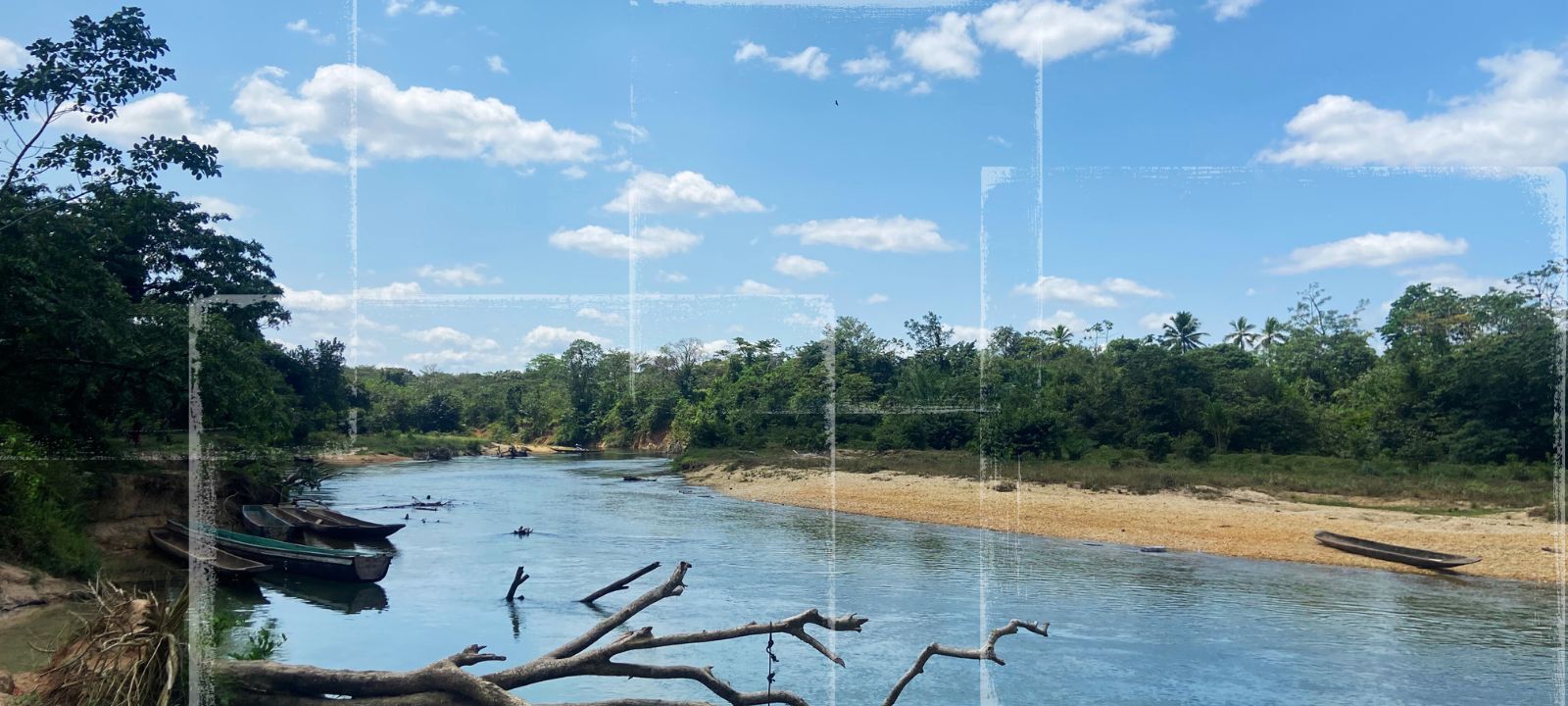March 2023. Late afternoon. Puerto Lempira, Honduras.
In front of the Tansin Lagoon, Moreno and Brutus, two Indigenous Miskito locals, each open a can of beer as the water sways gently beside us.
Brutus, a skinny, dark-haired young man, stands and begins to tell us how he came out of his last adventure alive.
Just a week ago, he says, he found treasure on the open sea and managed to escape from a group of pirates who wanted to take it from him. He looks toward the horizon as he recalls his story. After the escape, he had the most memorable night of his life, he says.
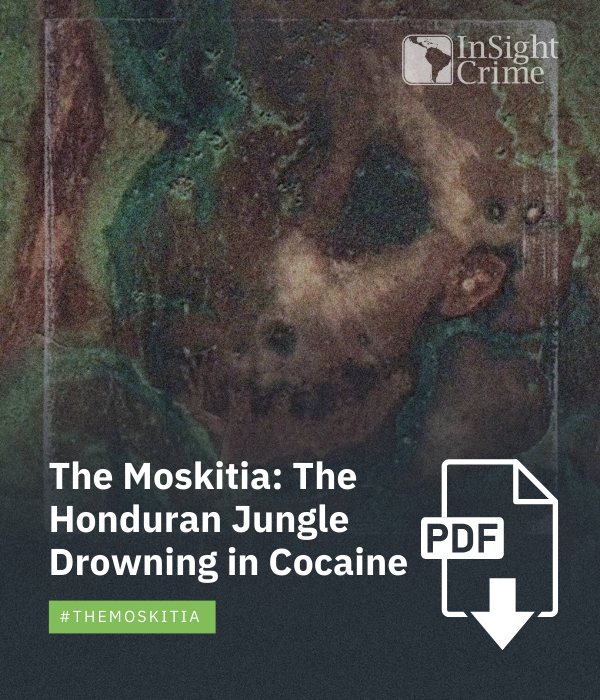
*This article is the first in a three-part investigation, “The Moskitia: The Honduran Jungle Drowning in Cocaine,” which analyzes how drug trafficking threatens one of the last jungle areas in Central America and the communities that live there. Download the full report or read the full investigation here.
We met Brutus through Moreno, a former employee of a local cartel who spent much of his adolescence taking packages of cocaine out of airplanes and putting them onto boats, and vice versa.
Several sources had told us about a package of drugs that appeared a week ago, floating in the ocean. It was discovered by Miskito fishermen. Moreno said that Brutus, a friend of his, was on that boat. Brutus doesn’t leave the house, he said. He’s depressed. But if we bought a few beers and something to eat, maybe Brutus would tell us his story.
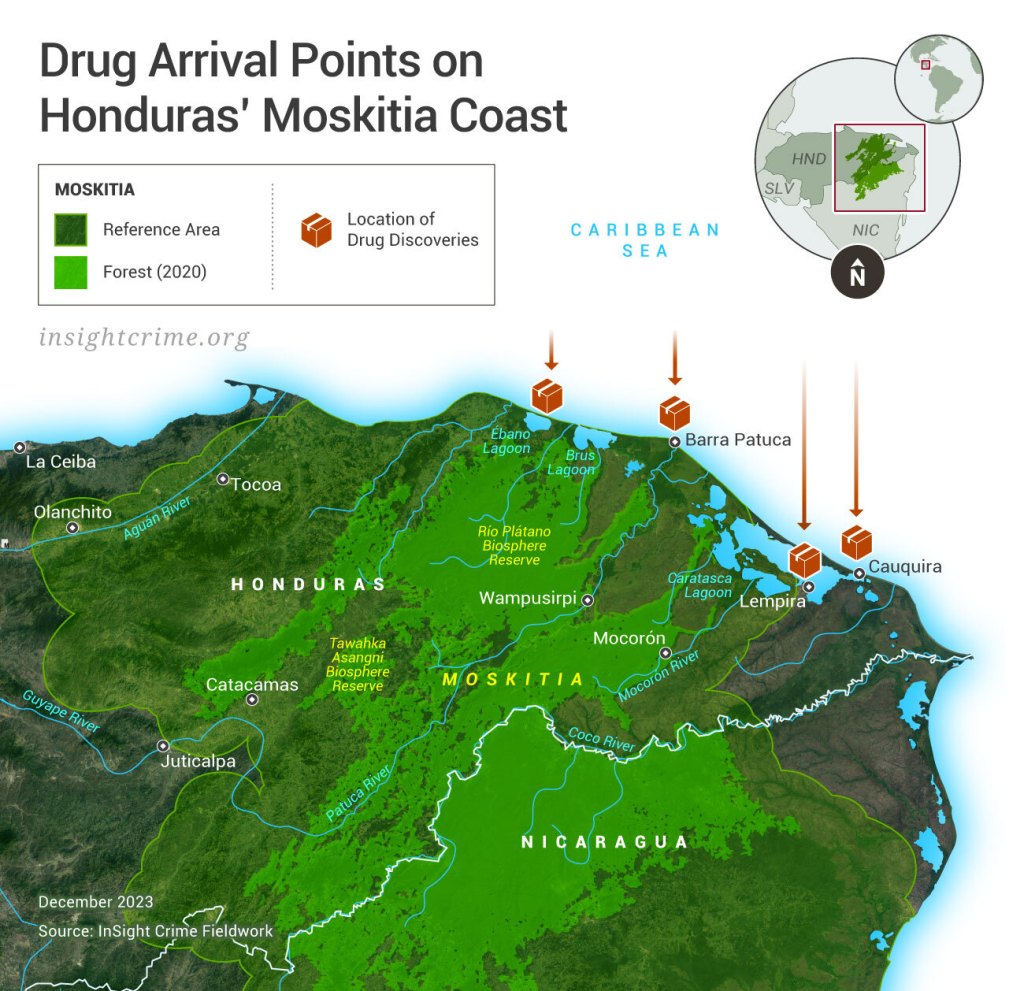
This morning, Moreno said that the mafia has ears everywhere. If we wanted to speak, we had to go somewhere isolated.
So we did. We picked up Brutus and went to a small private beach in front of an abandoned mansion. It was being built by the Honduran drug trafficker, Arnulfo Fagot Maximo, when Honduran authorities arrested him in 2017 and extradited him to the United States. In 2019, Fagot Maximo was convicted of conspiracy to distribute cocaine and sentenced to 33 years in prison.
Once we arrived, Brutus began his tale. In a mixture of Spanish and Miskito, his native language, he told us what he had found at sea.
“We saw it floating in the distance and one of the fishermen on the boat jumped in to pick it up,” he said. “Another fisherman even started to shout, ‘Yes! Today, we hit the big one!’ We didn’t fish anymore that night, and we woke up drinking. We were happy. It was 29 kilos.”
The sea had gifted the fisherman a valuable treasure: a load of pure cocaine worth around $110,000 in the Moskitia at the time.
Brutus and the sailors didn’t know it yet, but the sea has conditions when giving up its spoils.
The captain told them that 25 kilograms of the cocaine was his because he owned the boat. He called the captain of another boat, who arrived and took the 25 kilograms. Brutus and the other sailors were bereft: they’d held the treasure in their hands, and now it was gone. But the other captain and his boat never reached their destination. They were intercepted by a boat carrying armed men in uniform, who took the cocaine.
Brutus’ captain was left with nothing, while Brutus and the 12 sailors had 4 kilograms to share, the equivalent of about $16,000. If they managed to sell it all, they would each receive just over $1,300 each. But once again, the sea had its own plans.
The Moskitia: The Last Kingdom
We are in the Moskitia jungle, in the department of Gracias a Dios, on Honduras’ northeast coast. This jungle is by far the largest in the country and one of the largest and most important in Mesoamerica. It is home to 20 of the 21 families of aquatic birds in Honduras, according to the Wildlife Conservation Society, an organization dedicated to the conservation of wild areas. It is also a refuge for jaguars, pumas, tapirs, and red-and-green macaws.
The Moskitia was an autonomous kingdom until the end of the 19th century. It was a poor and densely jungled place, and ruled by “the Moskitia King,” who was recognized by the British Empire. But the kingship was an empty title — a way for the English to keep a foot inside the territory of the Spanish empire. That’s why its annexation to the rest of Central America took 300 years longer than the rest of the region’s territories.
For hundreds of years, the region’s river system and the lagoons isolated and protected the Miskito people from invasions from the mainland, from the influence of the mestizos — people of European and Indigenous heritage — and from the voracity of capitalism. Yet the relationship between the people and the rivers is difficult. The rivers provide locals with fish to catch, waterways to move through, and water to drink. But occasionally, when tropical storms arrive, those rivers and lagoons become congested and overflow, drowning the life they nurture.

The Moskitia extends 22,568 square kilometers along the border between Honduras and Nicaragua, and is inhabited by more than 100,000 people. It is the least inhabited region in Honduras and one of the least densely populated areas in Central America.
Its inhabitants are mostly Indigenous Miskitos, like Moreno and Brutus. There are also other minority groups, including Garífunas, people of Indigenous and African heritage, and other Indigenous groups, such as Tawankas, Pech, and Nahuas.
For the last three decades or so, there have also been mestizos. The Miskitos call these mestizos who now surround them, and all outsiders who were not born within the boundaries of their jungle, “terceros,” or third parties.
The Miskitos believe these mestizos are invaders. They are accused of a range of crimes by Indigenous authorities, from the murder of Indigenous leaders and the indiscriminate deforestation of the forest, to the disappearance of environmental defenders and the annihilation of the Miskito way of life.
SEE ALSO: Coca Growing, Cocaine Production Reach New Heights in Honduras
Dozens of Indigenous leaders from communities scattered throughout the jungle told InSight Crime something more. They said that the mestizos are also allies, workers, collaborators, and the driving force of one of the biggest political and economic forces in Honduras: drug trafficking. Two high-level police sources said the same, and at least two judicial documents to which InSight Crime had access repeated the accusation that the mestizos run the cocaine business.
The Cursed Treasure
The mansion of Fagot Maximo, where we sit with Moreno as Brutus tells his story, is imposing. Though it has been stripped to the bones, its grandeur remains. Had it been completed, it would have been a palace.
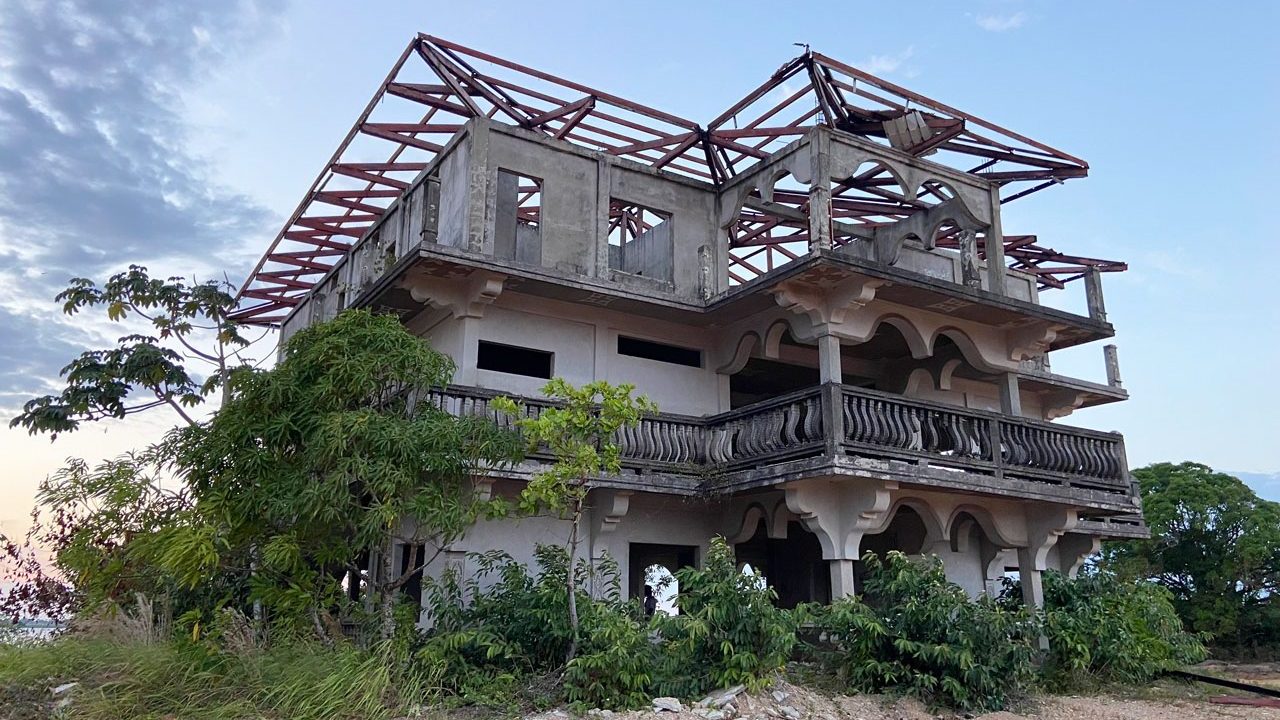
On the second floor, the remains of the mosaics and tiles that covered the pillars and the bar counter can be seen. On the northern side, facing the Tansin Lagoon, is what was planned to be a swimming pool. All that remains is a hole, overgrown with giant green weeds.
The upper part of that mansion remains a gray structure. It was still being built when the US Drug Enforcement Administration (DEA) arrived. The rooms and their jacuzzis have been taken over by the same green weeds that fill the pool, and local couples seeking privacy come to these rooms, ensuring that they serve the purpose for which they were built, but for different people: Miskitos.
Brutus shows us the photos of the cocaine packages he and the sailors found. Square lumps wrapped in blue plastic. In the photo, the hands of sailors are seen grasping the packages, as if they’re worried about losing them.
He tells us that he and the other sailors on that boat spent almost two months at sea, fishing for shrimp and lobster, while they anxiously guarded their spoils. Those 4 kilograms were to be shared by the 12 sailors, but the ship’s cook, an avid crack consumer, had opened a 1-kilogram packet, broken it in half, and scraped some off to turn into crack.
The cook’s actions almost caused a knife fight. There was little fishing from then on, and each sailor slept with one eye open. Dreams of wealth were pinned on those bricks of white powder, not on the lobsters at the bottom of the sea.
Time passed. At the beginning of March, 11 days before our meeting, Brutus and the other fishermen had returned to land at a port named Kaukira. There, Brutus had taken his share of cocaine. He sold it to a local buyer, and then he disappeared, leaving the others tangled up in the type of problem that is not easily resolved with words.
Brutus’ father, also a fisherman, picked him up from Kaukira in his boat. Brutus was carrying about $1,300. They were intercepted by pirates as they made their way home.
“When they flashed their lights at us we thought they were fishermen warning us not to break their trammel net. But suddenly — bang bang bang bang — the bullets,” says Brutus, opening his eyes wide, accompanying his story with wild gestures and thunderous sounds.
According to Brutus, the pirates were Miskitos. He recognized the faces of some old fishing buddies who had left the industry to concentrate on the sea’s more valuable commodities. Moreno confirmed their identities. The pirates had learned of the discovery and wanted, with the help of machetes and revolvers, to take their cut.
That day, however, the sea was not in their favor. They stole Brutus’ backpack, thinking it contained the money. But Brutus had hidden the cash in his crotch. After the attack ended and the pirates left, Brutus and his father headed back home to Puerto Lempira, the capital of Gracias a Dios, their loot intact.
After handing a few dollars to his father, Brutus went out to enjoy himself. He headed to the town’s bar area, put credit on his phone, and called his friends, Moreno included. He had bagged half an ounce of cocaine and decided to have a night to remember.
Later, he learned that after failing to steal Brutus’ cut, the pirates had gone looking for the other sailors in Port Kaukira. There, they found the crack-addicted cook and the others. They attacked them with machetes, snatched the cash, and left in their boats.
The sea gives, and the sea takes away.
Journey Through a Dying Jungle
Professor Aristides, one of the most important Indigenous leaders in this region, welcomes us to Puerto Lempira. It is perhaps the only place in the Moskitia jungle that can be called a city. It has three paved streets, electricity, telephone, and internet signal, as well as a dock and a police station.
The professor is a small man. He speaks Spanish with difficulty. While his simple conjugations are reminiscent of children learning to speak, his legal knowledge, and easy reference to institutions like the International Labor Organization (ILO) indicate he is an astute activist.
“The problem we have here is that terceros are destroying the jungle. They destroy large hectares of jungle and buy and sell land. This is illegal. According to ILO Convention 169, these lands belong to the Miskito community, they cannot be sold. But they [the terceros] do. They have drug traffickers behind them, that’s why it’s difficult to get them out,” says the professor, with a look of disgust on his face.
He invites us to go to his village, Tansin, on the other side of the lagoon, several hours away. Another local drives the old pickup truck in which we travel. It is a bumpy ride.
After less than an hour’s drive, we arrive at stretches of land that have been invaded by terceros. There is not a single tree in sight. It is now a never-ending empty valley, with cattle grazing in the distance. The professor takes us along a path that leads to fields planted with jackfruit. The fat, fleshy fruit grows from a few sparse trees. We are standing on private land, he tells us quietly. This is territory appropriated by the terceros.
On the nearby grounds is a tall, wooden barn with a frame that would look at home in the fields of Kentucky or Arkansas. Two new tractors and a Ford pickup are parked out front. A man watering jackfruit saplings growing in a nursery greets us. He is not Miskito, and neither the professor nor the driver return his greeting.
We leave. Not ten minutes have passed when a man driving an ATV overtakes us. He asks us to stop, tells us that he is the administrator of this farm, and that the land belongs to a man named “Bruce.” He wants to know who we are and what we are doing there. It is clear he wants us to leave. This land has a new owner.
In the car, the Miskitos sit silently. Anger fills their eyes. Expulsion from their land is becoming more and more frequent. Perhaps the professor wanted to make us feel what the locals endure each day.
We continue on, past more and more appropriated land. Huge fenced areas, hundreds of hectares in size, stretch as far as the eye can see. Barbed wire divides each plot, cutting to pieces the land that was once jungle, that once belonged to the Miskitos.

The Politician
The ILO Convention 169 of 1989 on “Indigenous and Tribal Peoples in Independent Countries,” has been ratified by Honduras and 22 other countries. It grants Indigenous organizations rights over their lands, stipulating that Indigenous lands must be administered by Indigenous organizations and cannot be sold or rented.
The Miskitos are aware of these agreements. The problem, according to Professor Arístides and other leaders, is that Miskito organizations have been co-opted by terceros. The Federation of Indigenous and Native People of the Mocorón Segovia Zone (Federación de Indígenas y Nativos de la Zona Mocorón Segovia – FINZMOS), one of the most powerful Miskito institutions, oversees the proper use of the land. But since 2014, it has been headed by Rogelio Elvir, a councilor in the mayor’s office of Puerto Lempira. Elvir is not Miskito, and several of his family members are allegedly linked to drug trafficking.
Elvir, now in his fifties, was born in one of the jungle towns on the border with Nicaragua. He is the brother of Marco Antonio Elvir, who the Honduran and US governments consider to be an important regional drug trafficker, according to Honduran media. His other brother, Modesto Elvir, now deceased, faced similar accusations. Rogelio Elvir is also the uncle of Rosbin Duarte Elvir, also accused by the Honduran media of being a drug trafficker.
In 2017, the Technical Agency for Criminal Investigation (Agencia Técnica de Investigación Criminal – ATIC), an agency dedicated to investigating and prosecuting crimes with serious social impact, seized at least 10 properties owned by Marco and Rosbin Elvir as part of operations Estigia I and Estigia II. The properties included luxurious mansions located deep in the jungle. The operations targeted a criminal group called “Los Helios,” allegedly led by Marco, dedicated to cocaine trafficking from the Moskitia to the United States. Some of the properties that were seized are located in Puerto Lempira. They have begun to crumble.
In Puerto Lempira, just a few blocks from one of these now dilapidated properties, Rogelio Elvir welcomes us. In staccato sentences, he tells us that the local people are exaggerating the land issue. He says that although it is true that some mestizo farmers are living in the Moskitia, they do not occupy more than a few hectares of land, used to plant their crops.
We tell him that we have visited the land, and that we have seen the devastation. He changes tact. It’s not really up to him to change the situation, he says. It’s the job of the central government. He tells us about groups of Miskitos who are organizing themselves to fight against terceros, and describes them as a group of bandits.
We ask him about his relationship with three members of his family who are accused of involvement in drug trafficking. He responds tersely. He isn’t responsible for his family, he says. He ends our conversation by saying that in reality, all Hondurans have the right to the Moskitia, and that it is a space that should be shared. He and his family are poor working people, he adds.
“I buy and sell animals, and that’s what I live on,” he says.
As a token of this, he asks us to pay for his coffee in the cafeteria of the mayor’s office.
“I didn’t even bring cash.”
He gets up and leaves.
The Poor Narcos
After a long journey through Miskito lands and lands appropriated by terceros, we finally arrive in the village of Tansin, where Professor Aristides was born and where he has worked for the last two decades.
As we arrive, we see movement. A group of 15 people are scampering around a tree, shouting excitedly as they sharpen long bamboo poles. They are chasing a large iguana. It is now surrounded, and its end is near. It pokes its head through the branches and stares at the people who will soon eat it.
Food insecurity affects 43% of the people in the Moskitia, according to the World Bank, meaning that almost half the people here do not have the secure source of food they need to live. Most eat rice, beans, and yucca for almost every meal.
”Bush meat,” like the iguana, is vital. But since the arrival of terceros, there are fewer animals to hunt, and fishing in the lagoons and rivers has become increasingly difficult. The environmental destruction that has accompanied the terceros is having a terrible impact.
Tansin has one flimsily built school. Boys and girls receive classes in a tin-roofed, wooden-walled enclosure that at 11 o’clock in the morning turns into an oven, making the air unbreathable. The school is not big enough, and the groups that cannot get into the classrooms must take refuge under the shade of the trees. There is no bathroom or running water. A group of emaciated horses wander around the school, looking for scraps of food in the garbage. The three teachers who give classes leave their students repeating the vowels in Spanish and Miskito over and over again and approach us. They tell us that their students have no chance at a good life.
In the Moskitia, work is scarce. Those who can are employed as fishermen. Living in the ancestral way, planting small plots of land and hunting in the mountains, is increasingly difficult. The most fertile lands are already in the hands of terceros.
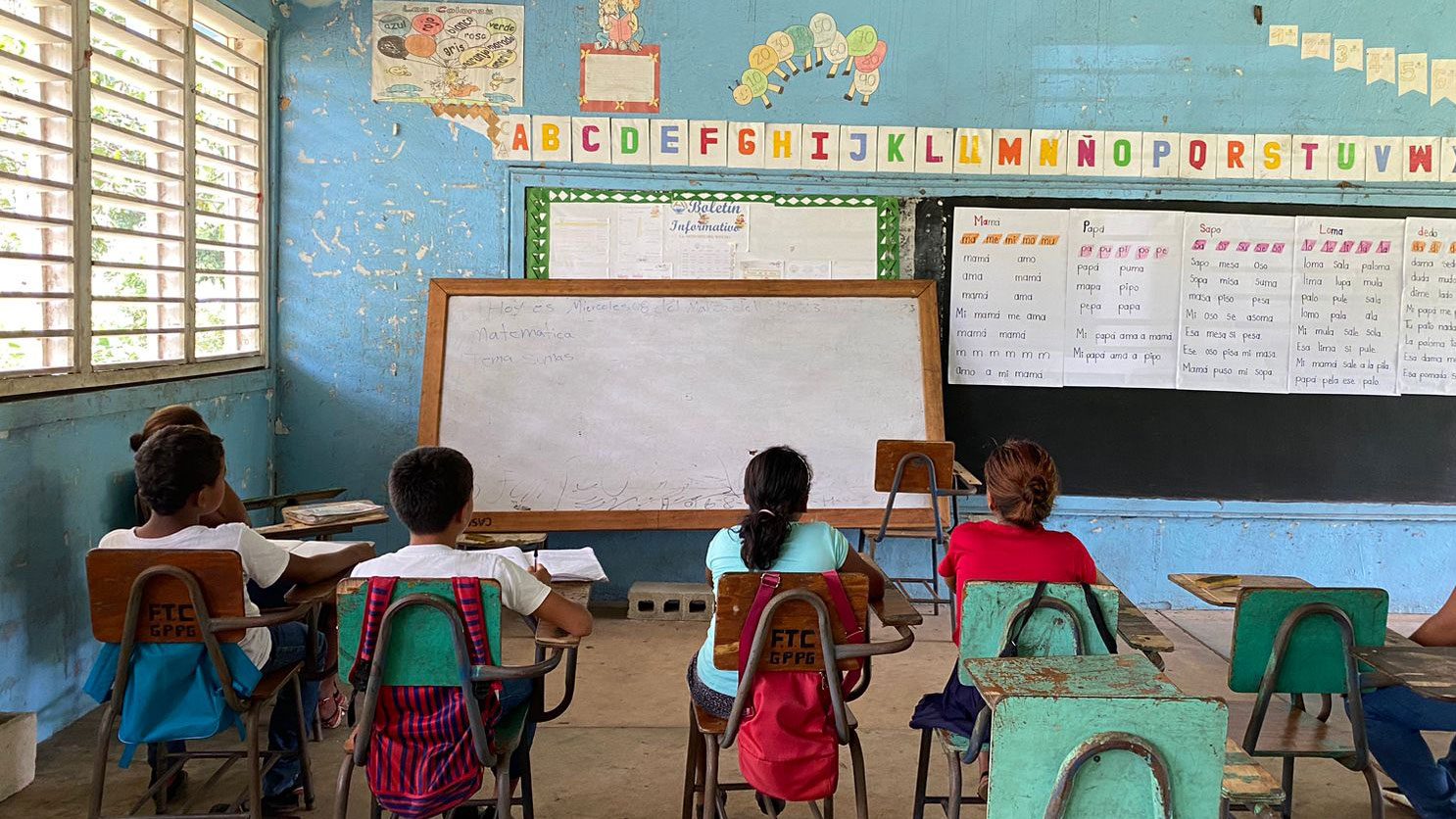
The local people say that the jungle is dying and with it the animals. This is not only their perception. Global Forest Watch, an online platform that tracks deforestation worldwide, estimates that the department of Gracias a Dios lost 110,000 hectares of forest — equivalent to more than 150,000 soccer fields — between 2015 and 2022. This ancient forest, which survived the devastation of the Spanish conquest 500 years ago, the destructive maelstrom of the colonial era from 1500 to 1821, and the arrival and establishment of capitalism in the 20th century, will be lost completely in less than 300 years if deforestation continues at this rate. In less than ten generations, the Moskitia could be a thing of the past.
The school’s director, a plump 29-year-old man, paints a thorny future for these barefoot children who are struggling to write a few words of Spanish in their notebooks. With the jungle dying and work scarce, earning money working for drug traffickers has become more palatable and more necessary for the Miskitos. The director himself unabashedly tells us that he worked for the narcos at a difficult economic time for his family.
“Loading and unloading boats and airplanes, brothers. That’s how I had to do it, there was no work,” he tells us in front of his students.
El Narco
The drug trade has been in the Moskitia since the 1980s. It has hundreds of beaches on the Caribbean Sea, and it is both unpopulated and remote, making it difficult for authorities to access. These features make this part of the jungle ideal for smuggling drugs and shipping them north. Local social conditions, including unemployment and hunger, provide drug traffickers with an easy labor pool.
The first to see these socio-ecological advantages of the Moskitia was Juan Ramon Matta Ballesteros. He was the most important drug smuggler in Central America in the 1980s, and the link between traffickers in Mexico and Colombia. However, his reign was short-lived. In April 1988, he was arrested by the Honduran police and escorted by US Marshals to the United States where, 35 years later, he remains in prison.
More recently, the Miskito jungle was also the scene of operations for a conglomerate of Honduran kingpins who, according to US prosecutors, maintained ties to then-President Juan Orlando Hernandez. Hernandez is in a US jail cell, along with his brother, a son of another former president, and other Hondurans belonging to the country’s political elite.
SEE ALSO: From Ally to Extradited: Former Honduras President Sent to US on Drug Charges

The Moskitia, and much of northern Honduras, has been a narco empire for the last three decades. But until recently, drug traffickers’ presence was more discreet, more clandestine. They kept to their mansions and clandestine runways.
However, in the last 10 years or so, the traffickers have begun to take over large tracts of Miskito land. They have chosen the most pragmatic way: they take the land by force, then cut down the trees and put up barbed wire and install armed guards. Where there are no trees, there is no forest, and where there is no forest, there are no Miskitos.
The only benefit the Miskitos have found in the arrival of the terceros is that, from time to time, the sea gives them a few kilograms of cocaine. The drugs are the product of shipwrecks or accidents. Locals can sell the drugs and, when there is enough, turn their lives around. But, according to the school’s director, Professor Aristides, Brutus, Moreno, and almost any Miskito we have spoken to over the past five months, even that dangerous benefit is being lost.
Another professor tells us that while March is “high season” for finding packages of cocaine on or near the coasts, cocaine is not as desirable as in the past. The price has fallen. They have come together to fix the prices, and now a kilogram of cocaine recovered and in good condition that could cost $9,000 five years ago, barely scrapes $4,000.
“Now they don’t pay anything per kilo. It’s dirt cheap, brother,” the director complains.
If what Professor Aristides wants to show us is that drugs have not filled the Miskito villages with opulence, he has succeeded. Everything indicates that having added cocaine to the formula of state neglect, multidimensional poverty, and land invasion will bring the Miskito culture closer to its decline or extinction. Its geographic location, which for years protected it, now makes it appetizing to traffickers.
Contrary to what some authorities have told us, and to what dozens of Hondurans we have spoken to think, the Miskitos are not drug traffickers. They are left with the crumbs, the leftovers, the pieces that fall off the boats. This floating treasure, which appears only sporadically, has become the hope of entire families and villages.
Barra Patuca’s Piñata
Generally, these stories of Miskitos who find cocaine are of lustful sailors or lonely wanderers who comb the beaches in search of a life-changing find. Occasionally, the sea distributes its riches in a more communal way.
Last year, in April 2022, in a small and poor village called Barra Patuca, some packages, wrapped in plastic, appeared floating on the horizon. What happened next has already become a legend in the area. The story spread like fire through jungle villages.
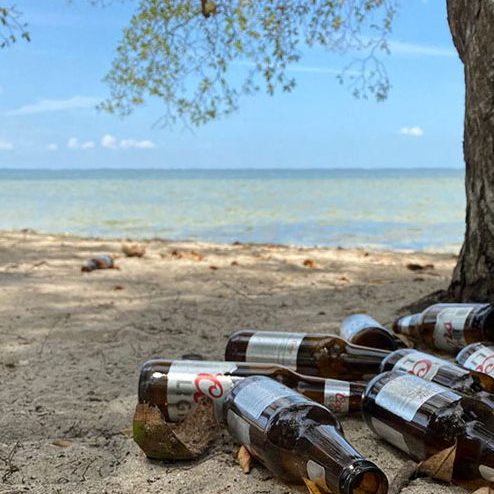
“The piñata lasted more than a month. It was like a carnival. People came from all over to buy and sell things. Food, guaro (a local form of hooch), prostitutes … There was everything there,” recalls a sailor from another community who visited Barra Patuca at that time.
“There were people lying in the streets, falling asleep drunk. People came from other parts, from far away, and stayed there for weeks,” he says.
The find brought a lot of money to Barra Patuca.
It all started when, one afternoon in April 2022, a group of fishermen divers were searching for lobster several nautical miles off the Miskito coast. The fishermen had already been in and out of the water for several hours that day. After a week at sea, they had not caught enough lobsters to make the expedition profitable, the captain told the sailors.
It seemed like the week couldn’t get any worse.
But the sea, as the Miskitos know, is capricious. Sometimes it can give you gifts.
“Then they saw what was floating by … It was a giant bale,” says a fisherman. “They saw,” he says, in the third-person plural, as if to stand back from it.
“And, all of a sudden, it wasn’t just one, it was a bunch of bundles! And we went out to grab them! Well, out they came,” he stumbles.
They were the first to come across the treasure. Then others would see it too.
It was like a mirage. Most had seen a bale of cocaine floating in the sea before. But it is one thing to find one bale with 24 kilograms, and quite another to find 87 bales with 24 kilograms each. Our Miskito sources estimated that 2 tons of cocaine floated to them. Two tons of treasure. White gold.
No one knows exactly where so many bales came from. Some sources told us they saw two drug trafficking boats being overturned by Miskitos in the estuaries of Barra Patuca. Others claim to have come across the bales on the high seas, while still others claim to have seen the bales arrive floating, calmly, to the shores of the village.
Those who were there say that the Coors Light beers, a luxury that can rarely be afforded, were sold out and that the stores in town sent boys in boats to buy more, many more, but they had to drink them warm, there were not enough freezers or refrigerators in town.
The day after the discovery, “negotiators” who come from large cities like San Pedro Sula, Colon, or Tegucigalpa, to buy the drugs they find, arrived. Not two days had passed when the money began to flow.
Then came the “Turks,” the name used by Miskitos for anyone who sells clothes or fabrics. After them came those who had a motorcycle, a boat motor, a few pounds of rice or beans, or a pig. Even sex workers arrived. Almost everyone who had something to trade for money came to the village. Those who had managed to sell some cocaine bought whatever was put in front of them. The most visionary bought cement and wood to construct or repair houses. Others bought a lot of Coors Light. That party lasted almost a month.
The Cocaine Current
The Miskitos attribute the arrival of cocaine to supernatural causes that have to do with deities, with destiny, or a type of karma for their own actions. They have charged these events with a profound meaning, and have incorporated them into their worldview. Finding drugs is something they attribute to a sort of game between good and evil, where evil tempts people with drugs to divert them from the just path. It almost always succeeds.
However, an oceanographer from an English transnational oil and petroleum company, who asked not to be identified by name, explained in an interview with InSight Crime in May 2023 that the arrival of this drug in certain places, in certain seasons, has to do with a body of water known as the Western Caribbean Current.
“I can drop a buoy in a place in the Caribbean and I know exactly where it will arrive and when because the currents always work the same way. They move in a loop,” says the expert.
This man has been studying the Caribbean Sea around the Honduran Moskitia for more than 20 years. He believes that while many bales of drugs are lost or abandoned by their carriers, others are deliberately dropped by planes in specific locations. He says he has witnessed such events and knows of colleagues who have even been hired to advise traffickers on the nature of these flows.
Perhaps this explains why the buyers arrive so quickly, with cash already prepared, to buy the drugs that the Miskitos find. If what the oceanographer claims is true, the Indigenous Miskitos are another unknowing link in the drug distribution chain.
For the Miskitos, poverty disappears when they get their hands on these bales. They can become wealthy overnight. Although the price at which outsiders buy a kilogram of cocaine from the Miskitos has plummeted lately, $4,000 — the price of a kilogram of cocaine there today — would take a local fisherman or farmer more than a year to make from daily backbreaking labor.
But after the explosion of wealth and the binge it brings, the hangover always arrives.
The Hangover
For the Miskitos, drug money is a bad omen. Cursed money goes like water through the hands, evaporates, and brings only short-term revelry. That’s why, the shrewdest outsiders only showed up in Barra Patuca once the party was over.

“I came to the piñata, to buy motors. They gave them to me cheap. When there is cocaine, my people, the Miskitos, buy engines, a freezer, a motorcycle, a boat, a television, a fishing net, or a car. But after two months, when the coca money is spent, and they’re poor again, they sell everything cheap. I went to buy two motors after the party was over. I got them for 40,000 lempiras ($1,624), but they cost more than 90,000 lempiras ($3,655) new,” said one of the teachers at the school in Tansin, to the astonishment of his students.
The Miskito culture is not a capitalist culture. The people do not operate under the logic of surplus value. Instead, they live by subsistence, or sowing to live. The Miskito language does not have words for numbers beyond twenty. Twenty is yawanaiska, which, literally translated, means all the fingers on my hands plus all the toes on my feet. To express higher numbers they have had to incorporate Spanish words. Under the logic of subsistence, it is more important to share with your community than to invest in a company.
In July 2022, after the festivities, the lobster hunters of Barra Patuca returned to the sea. The fishermen climbed into their mahogany canoes and the poor merchants returned to their sales. The peasants continued planting their yucca and rice. With the joy of having been part of an unforgettable carnival, and the memory of having been momentarily rich, they hoped that the sea would once again repeat its kindness. Now the sailors and lobster fishermen look toward the horizon, hoping to again see a white lump float toward them so that the party can start once more.
The Treasure Goes Up in Smoke
As for Brutus, word of his story soon spread, and he went from being an ordinary sailor to being Brutus, the man the sea rewarded, the brave man who outwitted the pirates and the patron of Puerto Lempira’s nightlife. He tells us that after two days of drinking, snorting, eating, and sex, the money and cocaine ran out.
Rumor has it that the pirates who failed to steal his money have sworn to kill him if they see him again in Kaukira. Meanwhile, his friends keep asking him to buy them drinks and drugs, and they don’t believe him when he tells them it’s over. They call him selfish and withdraw. The same thing happens with his family. They scold him for keeping the money for himself and not sharing it with them. “You’re loaded, Brutus,” they tell him when he passes by, and everyone sells him more expensive food.
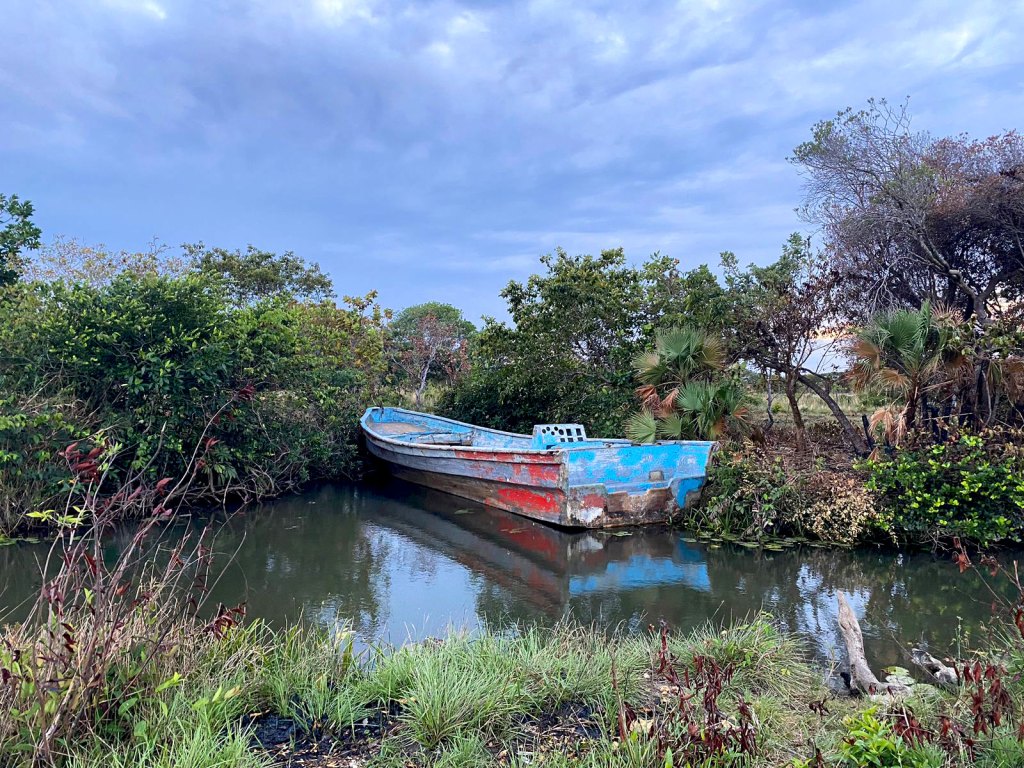
According to Brutus and Moreno, at least two of the pirates were killed by other pirates somewhere near Port Kaukira days after the robbery. The law of the sea.
The sun sets over the Tansin Lagoon, making the sky an impossible orange painting. Flocks of birds interrupt us with their twilight chatter. Nocturnal animals are beginning to wake. In front of us there is an abandoned boat. It had arrived loaded with 80 bales of cocaine some nine months back. Now it bobs lifelessly in the water, full of mold. No one has the courage to move it, let alone use it. The first Miskito couples of the evening wander about, looking for a dark and secluded place for romance.
The vestige of Arnulfo Fagot Máximo’s mansion is filling with shadows. From the half-built third floor, we can see to the other end of the lagoon. In the middle of a mangrove swamp, there is another boat. That one also came loaded with cocaine a year and a half ago and was abandoned by its owners. Nobody touches that one either.
At night, Brutus and Moreno tell us that we should head home. After dusk, the lovers leave and the addicts, the thieves, the pirates, and vagabonds of Puerto Lempira come out. It is better that we go. To them, we are terceros.
Continue reading this three-part investigation:
Investigation credits:
Written by: Juan José Martínez d’Aubuisson, Bryan Avelar
Edited by: Steven Dudley, James Bargent, María Fernanda Ramírez, Peter Appleby
Fact-checking: James Bargent, María Fernanda Ramírez, Chongyang Zhang
Creative direction: Elisa Roldán Restrepo
Chapters layout and video editing: María Isabel Gaviria
PDF layout: Ana Isabel Rico
Graphics: Juan José Restrepo, María Isabel Gaviria, Ana Isabel Rico
Photos and videos: Bryan Avelar, Juan José Martínez d’Aubuisson

